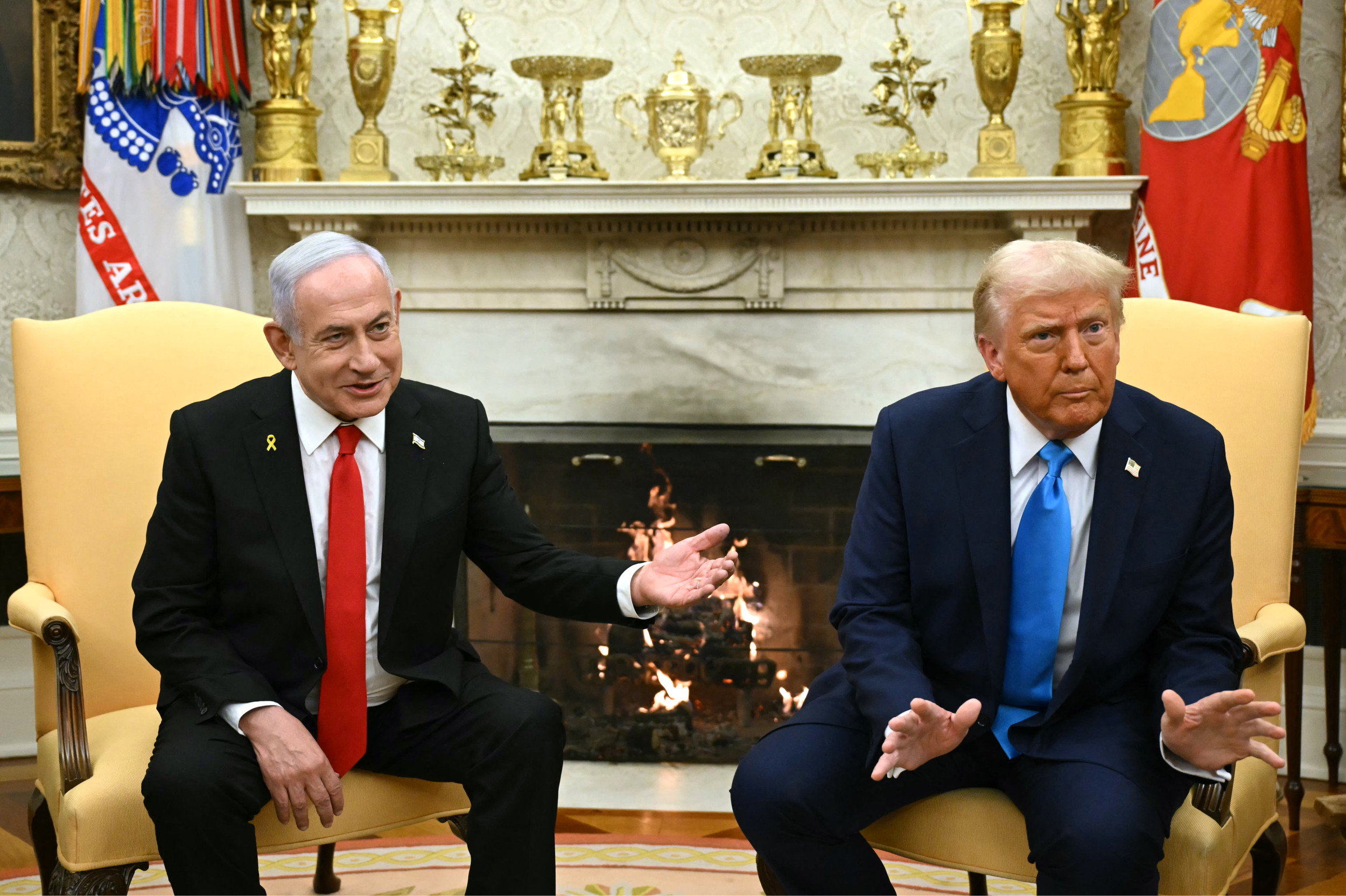
With the White House leading the charge to bring about a long-term ceasefire in Gaza, the return of the hostages, and following the cessation of open and direct conflict between Israel and Iran, there is hope for optimism in a region where pessimism is the default setting. Despite the heavy toll of the recent conflicts, a new geopolitical landscape is taking shape in the Middle East—one that holds the promise of lasting transformation. Call it cautious optimism, or even premature—but the signs are difficult to ignore.
In many ways, Israel’s confrontation with Iran, along with the war that began on October 7, marks a tectonic shift in Middle Eastern dynamics.
It began with a fateful decision by Yahya Sinwar, Hamas‘ leader in Gaza—a decision that set off a cascade across the so-called axis of resistance. What seemed like an isolated, if brutal, escalation now looks more like the first domino in the unraveling of an entire regional alignment.
ANDREW CABALLERO-REYNOLDS/AFP via Getty Images
Even if the Islamic Republic of Iran remains intact, the aftermath of these conflicts will likely leave it severely weakened. Iran may emerge stripped of the vast arsenal it has invested in for decades—its nuclear program, its long-range missile capabilities, and its sprawling proxy networks in Lebanon, Iraq, Syria, Gaza, and Yemen. Trillions of dollars in regional influence may now be lost.
For Israel, the immediate imperative is to bring the Gaza war to a close and secure the return of the hostages. But even that task is now shaped by a dramatically altered regional risk landscape. The deterrence equation has changed, as has Israel’s room for strategic maneuvering.
Far more significant, however, is the opportunity this moment presents for long-term realignment. The tectonic plates of the Middle East are shifting. The weakening of Iran and its allies creates space for an expanded circle of normalization. The Abraham Accords may soon include Saudi Arabia—and potentially even states long considered out of reach, like Syria and Lebanon.
Deprived of Iranian sponsorship, Hezbollah may find itself facing a reckoning. Once a dominant destabilizing force, it will now have to recalibrate its role within Lebanon’s fractured political system—perhaps even face pressure to disarm or integrate politically in ways it has long resisted.
Should the ultimate turning point occur—if the Iranian regime were to collapse and be replaced by a fundamentally different leadership—Iran itself could reenter the regional stage, not as a spoiler, but as a potential partner in a new, post-theocratic era.
In such a scenario, Israel would find itself in a position never before imagined: fully integrated into the region, not only diplomatically but economically. Trade, infrastructure, and innovation partnerships could stretch from the mountains of Afghanistan to the beaches of Tel Aviv. One need only imagine the economic potential of such a corridor.
And what of the Palestinians? The hardline factions, stripped of external backing, would be isolated. For the rest, a long-term interim arrangement offering full political autonomy and semi-sovereignty, and guaranteed civil rights could become the most realistic path forward. In such a regional climate, the possibility of Palestinian prosperity—alongside Israeli, Saudi, Emirati, and even Iranian growth—would no longer be a fantasy.
This is not naïve utopianism. It is a recognition that sometimes, out of protracted conflict, new possibilities arise. The Middle East has been here before and squandered such moments. But this time, perhaps, the pieces are falling into place for something more durable.
Dr. Shuki Friedman is the director-general of the Jewish People Policy Institute and a senior lecturer in law at the Peres Academic Center. He is former chairman of the Israeli government committee on the Iran sanctions, and headed the international and foreign law department of the Israeli Prime Minister’s Office.
The views expressed in this article are the writer’s own.
